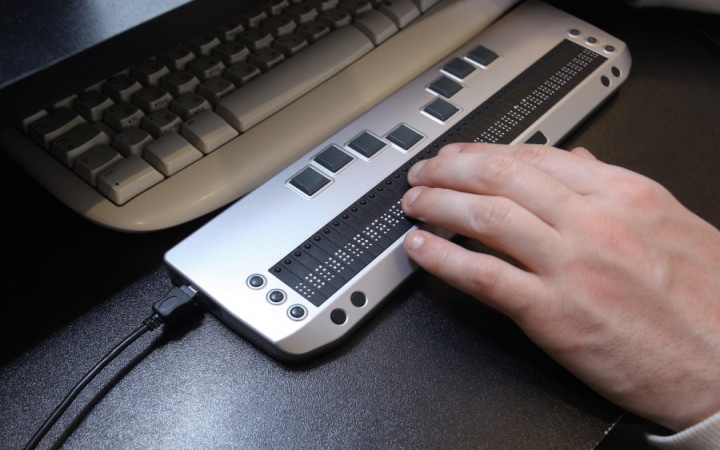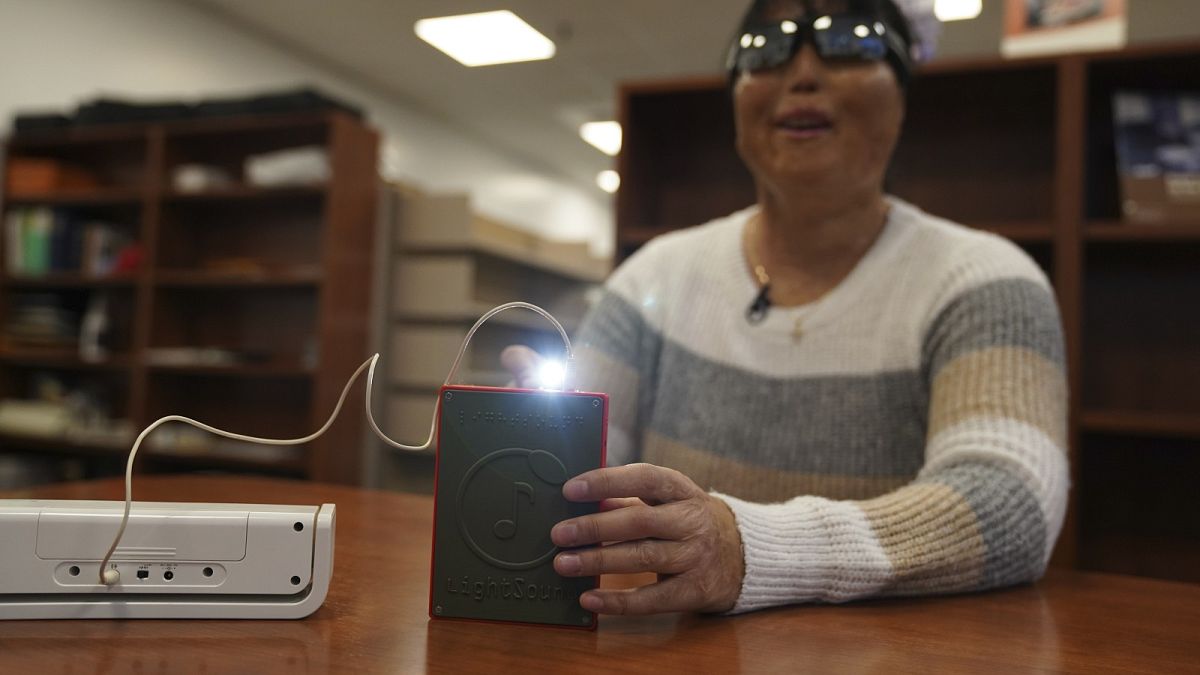Enhancing Lives With Advanced Assistive Gadgets for the Blind
The assimilation of sophisticated assistive tools for the blind is changing exactly how individuals experience their surroundings and connect with their neighborhoods. Technologies such as augmented truth smart glasses and advanced electronic traveling aids not just help with navigating however also improve general lifestyle. These technologies foster a sense of freedom and self-efficacy among individuals, allowing them to take on everyday jobs with newfound confidence. The ramifications of these developments prolong past mere performance; they test societal understandings of impairment and freedom. What does this evolution mean for the future of assistive technology and its duty in empowering individuals?
Overview of Assistive Instruments
Assistive gadgets for the blind incorporate a varied variety of devices and innovations made to improve freedom and improve the top quality of life for people with visual impairments. These devices satisfy numerous demands, from navigation and mobility to interaction and day-to-day job management.
One of the key categories of assistive gadgets consists of flexibility aids, such as white canes and overview pets, which help customers browse their surroundings securely. Digital travel aids, outfitted with sensors and audio responses, likewise play a significant duty in mobility improvement.
In addition, gadgets that assist with everyday living tasks, such as flexible kitchen area devices, Braille labels, and chatting watches, encourage individuals to do jobs independently. Interaction aids, including display viewers and Braille screens, facilitate accessibility to details and make it possible for individuals to engage effectively with the electronic globe.
Additionally, low-tech services like magnifying glasses and large-print products remain crucial for several individuals. Collectively, these assistive gadgets offer not only as sensible tools but also as crucial enablers of freedom, cultivating higher involvement in a globe that typically focuses on sighted experiences. Their combination into life is vital for promoting inclusivity and enhancing total health for those with visual impairments.
Innovative Technologies being used
Technology in technology has actually dramatically changed the landscape of tools available for individuals with visual impairments. Amongst one of the most significant developments are clever glasses incorporated with augmented truth, which supply real-time navigating assistance and object recognition. These devices leverage advanced cams and artificial intelligence to provide acoustic hints, boosting the customer's spatial understanding and autonomy.
Additionally, mobile applications have actually arised as effective resources, making it possible for users to identify money, reviewed message out loud, and browse strange settings via verbal instructions. Devices such as Braille displays and refreshable Braille tools remain to progress, providing smooth connection with computers and smartphones, therefore boosting communication and access to details.
Wearable innovation, including smartwatches outfitted with voice-activated features, better empowers users by helping with fast accessibility to notices and signals without calling for visual engagement. Responsive maps and 3D printing are also getting grip, offering substantial depictions of areas that help in positioning and wheelchair training.
Collectively, these ingenious technologies not only improve the every day lives of aesthetically damaged individuals but additionally foster better freedom, inclusivity, and engagement with the more comprehensive area, thus reshaping assumptions of accessibility. (OCR devices for the blind)
Individual Stories of Empowerment
Empowerment typically emerges from personal experiences that highlight the transformative influence of modern technology on individuals with aesthetic impairments. Take, as an example, the story of Sarah, a young musician that restored her enthusiasm for paint through the usage of a wise walking stick furnished with barrier detection. This device not just promoted her wheelchair but instilled a newly found confidence, permitting her to navigate public spaces independently and pursue her innovative endeavors.

These narratives emphasize the extensive impacts that advanced assistive tools can carry life. By enabling individuals to conquer barriers, innovation fosters a sense of autonomy and self-worth. Such empowerment stories function as a testament to the potential of innovation, highlighting just how the right devices can significantly improve high quality of life and open doors to new opportunities for those with aesthetic disabilities.
Advantages of Advanced Solutions
The combination of cutting-edge modern technology right into assistive devices considerably changes day-to-day experiences for those affected by vision loss. Wearable technology for low vision. Gadgets such as wise walking canes equipped with sensors, navigation applications, and wearable modern technology are made to supply real-time feedback, enhancing spatial understanding and minimizing the risks linked with flexibility.
Additionally, progressed assistive innovations foster social incorporation by facilitating interaction and communication. Voice-activated gadgets and apps allow individuals to gain access to details and engage with their environments independently, damaging barriers that previously impeded their involvement in educational, professional, and social setups.
In addition, the modification and adaptability of these remedies cater to the diverse requirements of customers, thereby enhancing their overall lifestyle. Enhanced capability, such as object recognition and text-to-speech abilities, encourages individuals with visual problems to perform jobs that they may have once discovered challenging. Ultimately, advanced assistive innovations not only enhance freedom and safety and security however also promote dignity and self-respect, enabling individuals to lead satisfying lives.
Future Fads in Assistive Technology
As modern technology remains to progress, the landscape of assistive devices for the blind is poised for exceptional improvements that will certainly even more enhance access and freedom. Arising fads in assistive technology indicate a shift towards increased assimilation of fabricated intelligence (AI) and artificial intelligence, enabling gadgets to adapt to individual customer requires in real-time. These technologies are expected to assist in more intuitive navigating systems that can identify challenges and give audio feedback, dramatically boosting outdoor Clicking Here mobility.
In addition, the growth of wearable advice technology, such as wise glasses geared up with augmented truth, will certainly permit customers to obtain contextual information regarding their environments, thereby enhancing their spatial awareness. Advancements in haptic technology promise to develop tactile comments gadgets, enabling customers to perceive details with touch, enhancing knowing and communication with their setting.
Telecommunication breakthroughs are also leading the way for remote aid remedies, where skilled experts can provide advice by means of video calls, ensuring assistance is conveniently easily accessible. As these trends unravel, the future of assistive devices for the blind will undoubtedly foster higher autonomy, equipping people to browse their globe with confidence and simplicity.

Conclusion
The integration of advanced assistive tools for the blind stands for a substantial innovation in fostering independence and enhancing top quality of life. By using innovative innovations, these tools empower customers to browse their environments with better self-confidence and freedom. As the field proceeds to advance, recurring study and growth will likely generate much official source more innovative solutions, better transforming the lived experiences of people with visual problems and promoting a higher feeling of inclusion within society.
The integration of advanced assistive tools for the blind is transforming how people experience their surroundings and interact with their areas. The assimilation of sophisticated innovation into assistive tools dramatically changes everyday experiences for those affected by vision loss.As innovation proceeds to progress, the landscape of assistive tools for the blind is positioned for exceptional innovations that will additionally boost accessibility and independence. Arising patterns in assistive modern technology indicate a shift toward raised integration of synthetic knowledge (AI) and equipment learning, allowing devices to adjust to private user requires in real-time.The assimilation of advanced assistive tools for the blind stands for a substantial improvement in promoting freedom and boosting high quality of life.